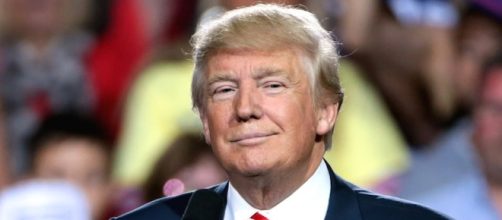The new executive orders signed by President #Donald Trump Wednesay officially put the hottest theme of his victorious presidential campaign on the political map; Immigration. His decision to go ahead with the anti-migrant wall between the United States and Mexico and the restrictions on Moslem immigration from “at risk countries”, as well as possible sanctions against the so-called “Sanctuary cities” will only add to the criticisms and protests that have become the hallmark of the first week of the new Administration.
Build the wall!
The cry of “Build the wall” by the public was a regular part of the Donald Trump’s campaign rallies that led to his election of November 8th, last.
This was the rallying cry of a part of the population worried about the effects of migration on the country. During the campaign the Republican candidate frequently made disparaging references to illegal Mexican migrants and to the potential dangers posed by terrorists posing as Moslem migrants to the country, particularly from the major hotspots of the Middle East.
The executive orders to put these promises into effect are now official government programmes, but they will certainly be the cause of protests that may well lead to appeals to the Supreme Court on the grounds of their constitutionality.
Although the wall is intended to block the illegal migration of workers it will also have the effect of blocking refugees from Latin American countries and this will give even more strength to any future protests.
The announcement of the wall with the promise that Mexico would eventually pay for the wall had the immediate effect of putting into doubt the planned official visit of Mexico’s President Enrique Peña Nieto to the White House.
Another wall was announced with the decision to limit Moslem immigration from the “at risk countries” in the Middle East. While this wall will not be physical, the immediate temporary freeze and restrictions of Moslem migrants from Iraq, Iran, Syria, Yemen, Sudan, Libya and Somalia will be strictly limited with priority given to persecuted minorities in these countries.
Although the ostensible reason for these restrictions is the fear of Islamic terrorism, they do raise some questions.
The first is the fact the groups such as ISIS do not only persecute non Christians and Yazidis, but also Shiites and members of other Moslem sects that do not conform with their strict interpretation of the Koran. Furthermore, the selection based on religion also raises the possibility of Supreme Court challenges on the basis of Freedom of religion.
Sanctuary cities
The executive order also raised the possibility of sanctions against the so-called “Sanctuary cities” such as San Francisco and New York that have migrant friendly policies. These cities were also targeted during the presidential campaign and so this decision was not a surprise. The possibility of sanctions against these cities also raises legal issues, such as the definition of “Sanctuary Cities” and the even these cases raise constitutional issues that will probably have to be settled by the Supreme Court.
In any case, the swathe of executive orders have crystallized the public’s perception of which parts of Trump’s campaign promises were rhetoric and which promises he seriously intends to put into action.
The executive orders will ensure that the issue of Immigration will be a priority for public debate for a long time into the future. Yet the biggest debate and probably limited to the inner Party meetings will probably ensue within the Republican party as the decisions strike at the very core of long term party policies on Immigration.
Yesterday’s ceremony was only the second stage of Trump’s agenda begun during the presidential campaign. The legislative process and also the outcomes of any Supreme Court challenges may well decide whether or not these decisions will stand. Now the country and the world will have to wait to see its final outcomes.

